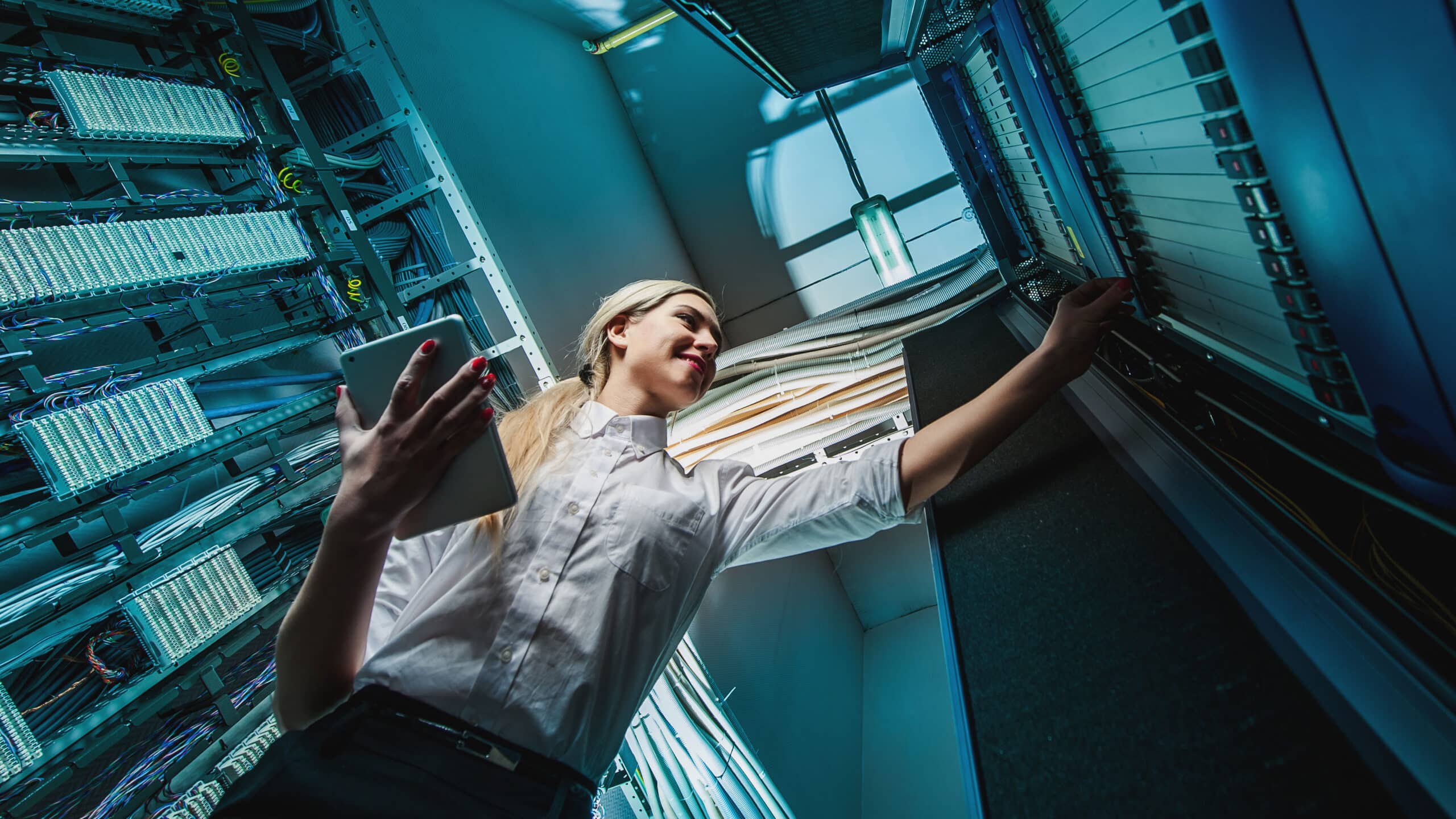Modern data centers face growing challenges balancing the energy demands of AI and high-performance computing with environmental sustainability. Optimized containment systems offer a key solution by separating hot and cold air streams, significantly enhancing cooling efficiency while reducing energy consumption and environmental impact.

By Andy Conner, Channel Director EMEAr at Subzero Engineering
The rising complexity of AI and high-performance computing (HPC) that data centers have increasingly had to handle has meant that they have now become hugely energy-intensive buildings. In addition, data center operatives have the ongoing challenge of minimizing environmental impact while maximizing energy use. Environmental consciousness and power resourcefulness are now essential objectives in the struggle to balance operational efficiency with sustainability.
One of the best strategies to accomplish these objectives is utilizing optimized containment. Containment systems offer improved cooling capacity with reduced energy use. By enhancing airflow control and lessening the pressure on cooling systems, containment can help data centers to save energy, not consume more.
Understanding Containment Systems
By keeping hot and cold air streams separate, to limit mixing, and increase cooling effectiveness, containment systems facilitate a regulated airflow environment.
There are two primary types of containment systems:
1. Hot Aisle Containment (HAC): This system encloses the hot aisles guiding the hot exhaust air away from server racks. The hot air is then returned to the AC return system. The HAC can increase cooling efficiency by 30%.
2. Cold Aisle Containment (CAC): This system isolates the cooled supply air from the CRAC units within direct proximity of the air intake of critical equipment.
While each has its benefits, data center layout, cooling infrastructure and sustainability goals can influence the choice of approach.
Best Practices for Containment Optimization
Containment should be the fundamental starting point for maximizing cooling capacity and energy efficiency in data centers. However, there are several needs to consider when determining the best containment strategy for the data center’s needs.
- Efficient Layout
- The current airflow dynamics firstly need to be assessed to examine and understand before the movement of air within the facility can be managed. Ensure high-density rack layouts are arranged together.
- Seal gaps and openings to prevent air leaks. Floors and ceilings are the most obvious leak areas but so are grommets and blanking panels.
- Adaptive Cooling Systems
- Intelligent cooling technologies such as variable-speed fans and economizers can be used, alongside real-time temperature and airflow monitoring.
- AI-driven analytics can also be used for proactive energy management.
- Continuous Monitoring and Adjustments
- Real-time monitoring tools should be implemented to track temperature, humidity and airflow to ensure ongoing efficiency.
Key Benefits of Optimized Containment
Optimizing cooling by separating the hot and cold air can ensure stable and consistent temperature distribution. By improving energy efficiency and overall cooling effectiveness, this can deliver on significant energy savings.
With optimized airflow control, any strain on cooling systems can be alleviated by targeting cooling levels precisely where they are needed. This targeted cooling can enable those higher-density server racks that are crucial for handling AI and HPC loads in specific sections of the data center, decreasing the risk of those zones overheating. This facilitates better utilization of the available space while reducing thermal stress on hardware, preventing premature failures and prolonging the ITE lifespan. Furthermore, intelligent containment solutions can use adaptive energy management integrated with a dynamic cooling control to adjust power usage based on real-time demand.
The cost savings accredited to these energy management techniques can contribute to a much quicker return on investment in infrastructure, while lowering operational costs. But as an added benefit, greenhouse gas emissions associated with excessive power use can also be drastically lowered, leading to a more sustainable operation.
No Containment?
What if you don’t use containment? While it may be possible to maintain enough airflow at the ITE intake to cool up to 6 kW per rack, more fan energy and lower supply temperatures would be required. Cooling systems would need to work much harder to maintain optimal temperatures effectively in the zones where the hot and cold air mixes, increasing the draw on energy. Hot spots and uneven cooling may also occur, negatively affecting the equipment’s performance, longevity and reliability.
Any negative effect on ITE performance or lifespan leads to increased maintenance costs or premature replacement. The direct consequence of producing more e-waste also contributes greatly to carbon emissions, adversely impacting sustainability efforts.
Reducing Environmental Impact
Containment strategies can significantly reduce the unfavorable environmental consequences of the data center. Water-intensive cooling systems can be eliminated, wasteful airflow and recirculation can be restricted and cooled air can be stopped from escaping. Efficient and effective cooling can lower both energy consumption and carbon emissions.
Optimizing containment is a vital first step toward achieving sustainable data center goals. Intelligent cooling systems, that decrease energy waste, and efficiently regulate airflow, can enable data centers to maximize and boost operational efficiency while minimizing their impact on the environment.
Carbon Neutral Consciousness
Long-term environmental goals need to be supported by sustainable infrastructure built with energy-efficient technologies and renewable energy sources. Utilizing containment to conserve energy can accomplish sustainability objectives while preserving high performance and reliability. This not only lowers the total cost of ownership (TCO), but helps to deliver on global environmental goals, enhancing eco-friendliness and reputation.
As the industry shifts to greener technology with a greater consciousness of carbon-neutral industrial sciences, optimized containment will continue to be a key strategy in the development of the next generation of high-performance yet environmentally friendly data centers.
About the writer
With a proven track record that spans over 20 years in Technology Sales, Marketing, Channel Leadership, Management and Distribution, Andy Conner has a reputation for delivering results and business growth. His previous roles include Senior UK and European leadership positions at companies such as Lenovo and Iomega (EMC), all with a focus on developing sales, maintaining relationships and creating strategic alliances that maximize opportunities and growth within the Channel.




